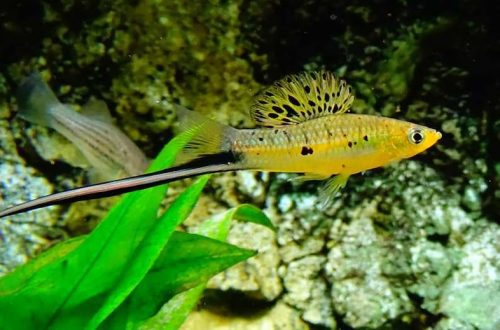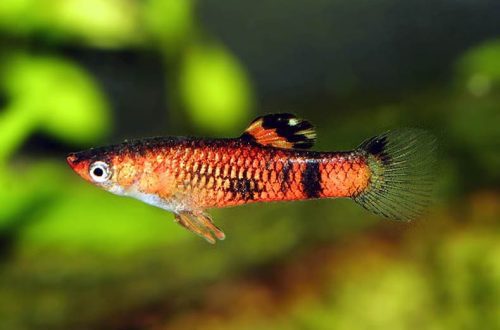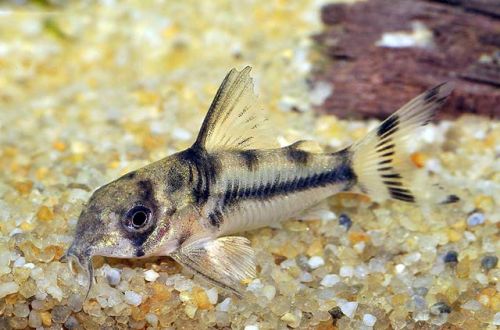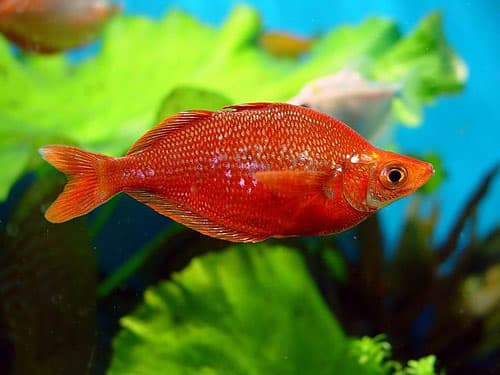
Glossolepis red
The fish is known by various colloquial names. The most popular are Glossolepis red, Red iris and Atherina red. The scientific name Glossolepis incisa belongs to the family Melanotaeniidae (Rainbows).

A bright moving fish that can decorate any freshwater aquarium. Easy to keep and breed, compatible with many other species, all this makes it an excellent choice even for a beginner aquarist.
Contents
Habitat
Endemic to the island of New Guinea, found in Lake Sentani and nearby water bodies. It lives mainly in shallow waters and shallows with dense aquatic and coastal vegetation. The main feature of the lake is a stable environment, hydrochemical indicators and temperature are approximately at the same level throughout the year.
Brief information:
- The volume of the aquarium – from 150 liters.
- Temperature – 22-25°C
- Value pH — 7.0–8.0
- Water hardness – medium (10-20 GH)
- Substrate type – any
- Lighting – moderate
- Brackish water – no
- Water movement is weak
- The size of the fish is up to 15 cm.
- Meals – any
- Temperament – peaceful
- Keeping a flock of at least 6-8 individuals
Description
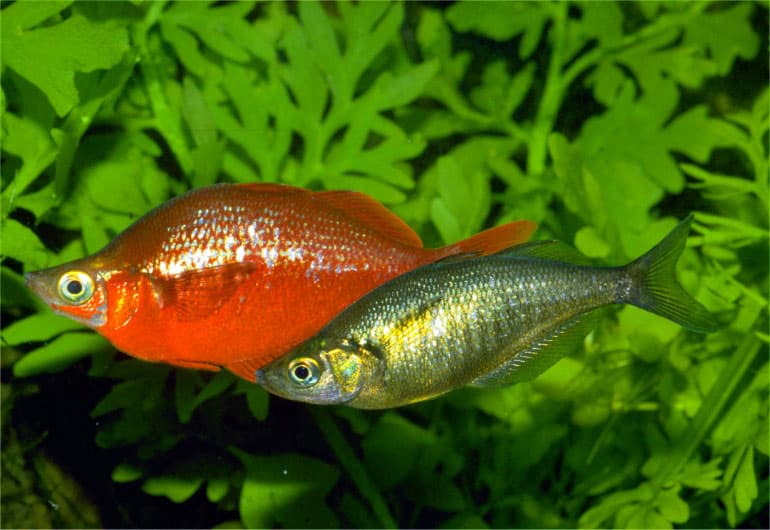
Adults reach a length of about 15 cm. Males have a rich red color, while females are painted in a yellowish olive color. It was noted that when the fish are kept near the lower limit of the permissible temperature, all males show characteristic red shades in the body color. However, at elevated temperatures, only the alpha male retains its color.
Food
Glossolepis red is an undemanding species. Accepts all types of popular dry, live and frozen foods in suitable sizes. The diet should be varied. The combination of different feeds favorably affects the general tone of the fish, which is directly manifested in their color.
Maintenance and care, arrangement of the aquarium
A flock of several fish will require an aquarium of 150 liters or more. The design is arbitrary, provided that it includes areas with dense vegetation and open areas for swimming.
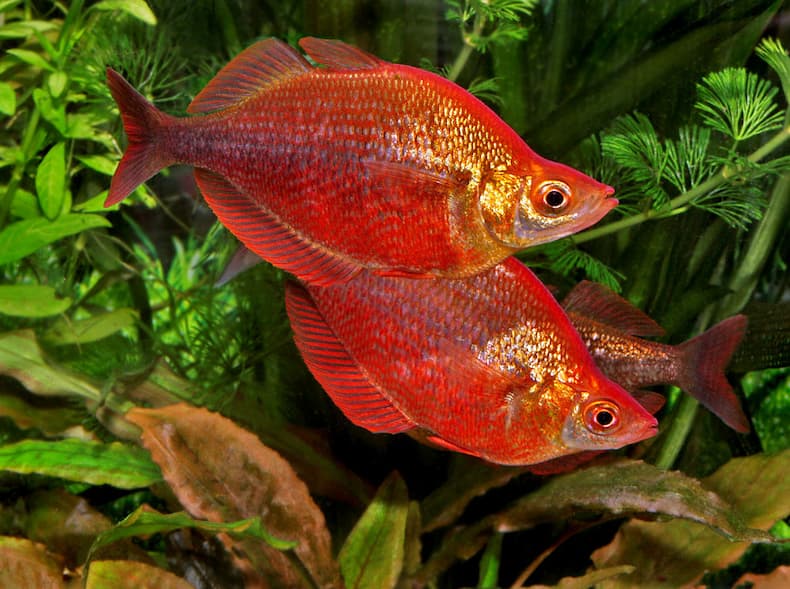
Being a native of a body of still water, the Red Rainbow does not respond well to strong currents, so the internal equipment, primarily filters, are adjusted and positioned in such a way as to minimize the movement of water in the aquarium.
Another important aspect in the maintenance of this species is the maintenance of stable conditions. If possible, sudden changes in temperature, pH and GH should be avoided.
Behavior and Compatibility
Peaceful and active fish. Compatible with many known species, however, due to their mobility and not small size, they can cause inconvenience to smaller and slower neighbors.
Keeping a flock of at least 6–8 individuals of both sexes, with a smaller number, Atherina red becomes shy and will spend most of the time hiding among the thickets.
Breeding / breeding
Breeding is quite simple, the fish are able to give offspring throughout the year. Spawning lasts about two days and occurs near low plants with hard leaves or thickets of mosses, on the surface of which more than a hundred eggs are fixed.
Parents, as a rule, do not eat their offspring, which cannot be said about other inhabitants of the aquarium. If necessary, the eggs should be carefully transferred to a separate tank with identical water conditions.
The incubation period lasts about 7-8 days. Tiny fry will initially need microscopic food such as ciliates, after about a week you can start feeding brine shrimp nauplii or specialized powdered food for tropical fish fry.
Fish diseases
Health problems arise only in case of injuries or when kept in unsuitable conditions, which depresses the immune system and, as a result, provokes the occurrence of any disease. In the event of the appearance of the first symptoms, first of all, it is necessary to check the water for the excess of certain indicators or the presence of dangerous concentrations of toxic substances (nitrites, nitrates, ammonium, etc.). If deviations are found, bring all values back to normal and only then proceed with treatment. Read more about symptoms and treatments in the Aquarium Fish Diseases section.
Source: FishBase



